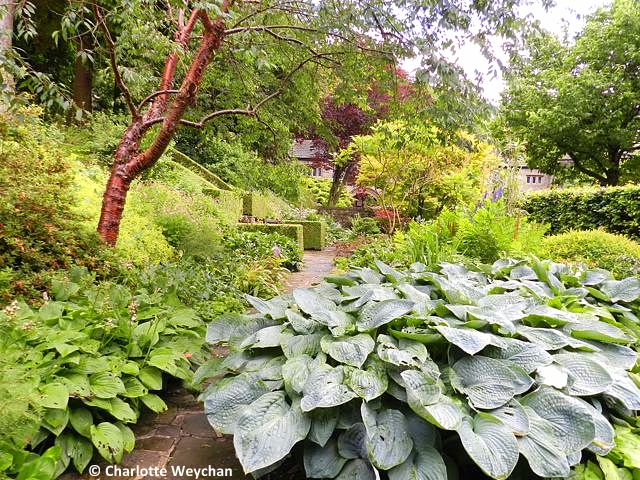 |
| The Canal House opened its "secret" garden for the first time this year as part of Amsterdam's Open Garden Day scheme |
For a garden weekend with a real difference readers should head for Amsterdam to enjoy the Open Garden Day celebration that takes place on the third weekend in June each year. It’s a wonderful chance to stroll along the canals in the city and see gardens that aren't normally open to the public, plus many of the great museums that line the canals, together with private houses, art galleries and even the green spaces behind banks and hotels that are rarely on show. This year saw 29 gardens participating in the event, which took place over three days – Friday to Sunday and I’m proud to say that in just two days, I visited most of them!
 |
| The garden behind ING bank - a surprisingly large plot, where the neighbouring garden is also on show |
I was based at the only hotel participating in the scheme – the glorious Canal House on Keizersgracht – a beautifully restored property with a wonderful slick urban garden which is normally only enjoyed by hotel guests. But the weekend saw several thousand visitors flocking to sneak a peak at this secret garden which opened for the first time this year as part of Open Garden Days. The location is perfect, on the edge of one of the three main canals, and the hotel is excellent – a real hidden gem – with a large patch of garden at the rear, because the property is actually three adjoining canal houses, knocked into one. The garden was completely redesigned and replanted last year as part of the hotel renovation.
 |
| Museum Geelvinck has one of the most impressive plots, with four interlinked gardens on Keisergracht |
Most of the gardens on show are located on Amsterdam’s three main canals – Herengracht, Keisergracht and Prinsengracht and include several cultural landmarks including the Biblical, Van Loon, Geelvinck and Willet-Holthuysen Museums; galleries, including the photography museum Foam and the Prins Bernhard Culture Fund; the garden at Amnesty International’s headquarters; the rarely seen sculptures owned by the bank, ING; the Mayor’s residence; and several private houses that are only open to the public as part of the Open Garden Day scheme.
Every garden on show as part of this annual event is unique, and plots range in size from the large gardens that grace the canal museums to tiny private plots. But the joy of the scheme is that you feel you're getting a sneak preview behind the scenes in every place you visit. All participating properties have a green banner outside to flag them out to visitors and once you've bought your tickets (15 Euros for all the gardens, with tickets on sale at selected garden venues), you can wander at leisure and visit Amsterdam's secret green spaces.



















































































































